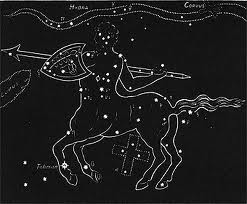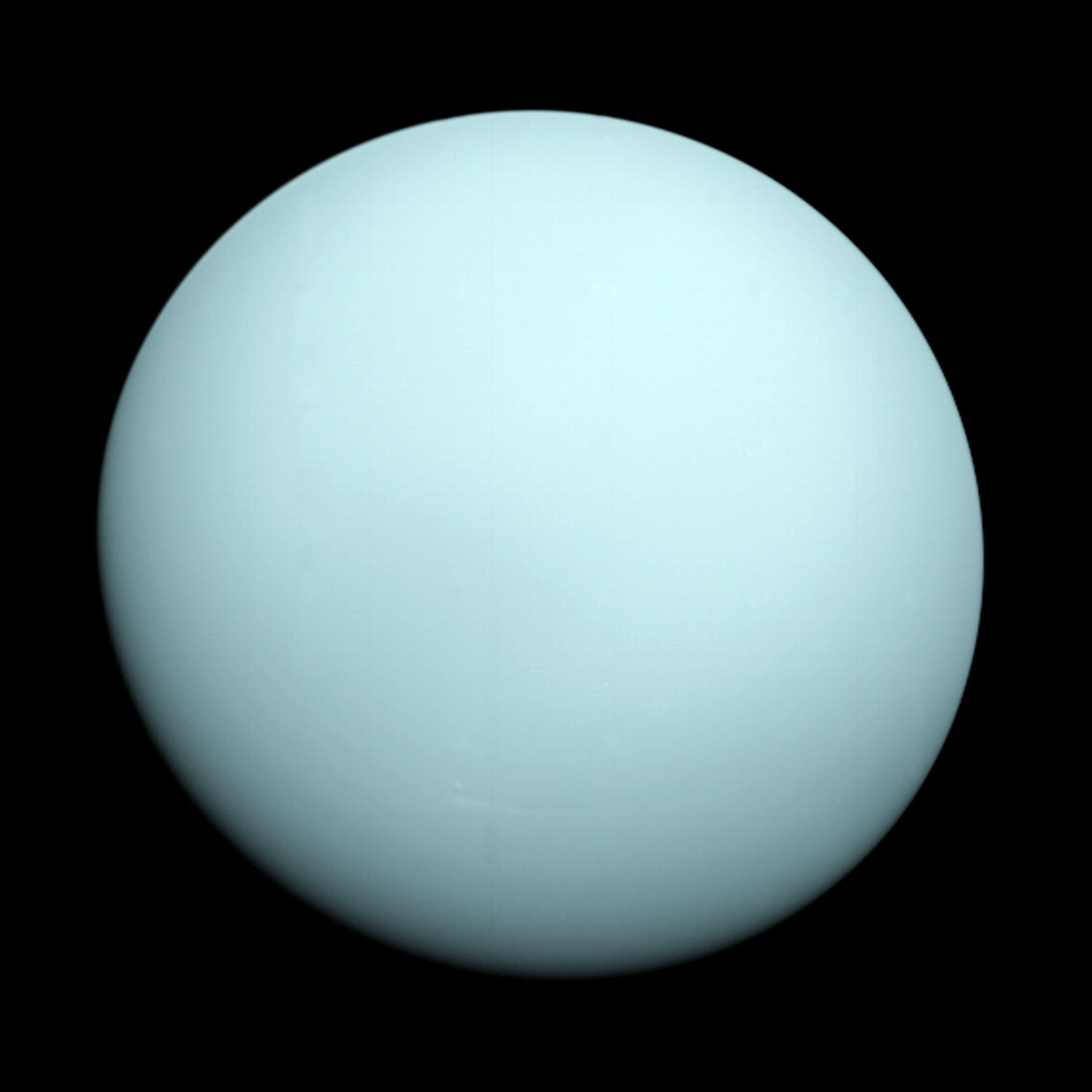CENTAUR BELT

Vital Stats:
The centaur belt contains objects with orbits ranging from Jupiter's orbit to Neptune's, and ranging in size as much as the asteroids, so these figures are only for Chiron, the first recognized centaur, which orbits between Saturn and Uranus.
-
Orbital radius: 14 Earth's
-
Diameter: 0.03 Earth's
-
Mass: ~0.00001 Earth's
-
Gravity: 0.004 g
-
Year: 50.8 Earth's
Points of Interest:
-
The centaur belt is defined as a collection of small bodies orbiting between Jupiter and Neptune, crossing the orbits of Saturn and Uranus from time to time.
-
Just as the centaurs of myth were a mixture of human and horse, astronomical centaurs are a mixture of asteroid and comet. They consists of varying proportions of ice (like comets) and rock and metal (like asteroids).
-
Likewise, the centaur belt lies between the asteroid belt and the Kuiper belt, where comets come from.
-
Because they cross the orbits of giant planets, centaurs have unstable orbits, and eventually either fall deeper into the Solar System or get kicked out to the outer zones.
Centaurs on Earth:
Chiron, the first centaur, was discovered in 1977 by Charles Kowal. Chiron was not the first centaur to be discovered, but it was the first to be recognized as a new class of astronomical body, and since Chiron of Greek myth was a centaur, "centaur" was what they called the new bodies. We have long since used up all the centaur names from myth on these new bodies. Chiron is classified as both an asteroid and a comet.

URANUS
A moving star that can be deemed a hitherto unknown planet-like object circulating beyond the orbit of Saturn
— William Herschel
Vital Stats:
-
Orbital radius: 19 Earth's
-
Diameter: 4 Earth's
-
Mass: 14.5 Earth's
-
Gravity: 0.9 g
-
Year: 84 Earth's
-
Day: 17.25 hours
Points of Interest:
-
Uranus and Neptune are "twins," being about the same mass and density. Earth and Venus are similar twins. Is there some mechanism that encourages the creation of twin planets?
-
Uranus has such low density, its gravity is lower than Earth's.
-
The density is higher than Jupiter's or Saturn's, though, so Uranus is presumably not just a ball of hydrogen and helium, like the two giants. Lots of methane, perhaps.
-
Uranus is an almost featureless ball of pale blue-green, though it does develop belts like those of Jupiter and Saturn, at certain seasons of its long year.
-
Uranus has plenty of interesting features without spectacular markings. Primarily, it "lies on its side." All other planets have their axis of rotation more or less perpendicular to the plane of their orbit, but Uranus' axis is at 98 degrees to the perpendicular, almost flat in the orbital plane. This presumably resulted from a massive collision in the early days of the Solar System.
-
Because of the tilt, if you stand at the north pole of Uranus on Midsummer's Day, the Sun is directly overhead. As the short Uranian days go by, it spirals around the zenith, getting further and further away, until, after 21 Earth-years, it sinks below the horizon. It will be back in 42 years.
-
Because of the tilt, Uranus' Tropics of Cancer and Capricorn are closer to the poles than are its Arctic and Antarctic Circles.
-
The orbits of Uranus' moons and rings are similarly tilted over. The collision must have happened before they formed.
-
Uranus' rings are there, but they are thin and black.
-
Uranus has five major moons: Ariel, Oberon, Titania, Miranda, and Umbriel. They are half rock, half ice.
-
All other planets give off more heat than they get from the Sun, but Uranus appears to have no geological heat at all. No one knows why.
-
The prevailing winds on Uranus blow opposite the direction of rotation. No one knows why.
-
The axis of Uranus' magnetic field is at 59 degrees to the axis of rotation, unlike all the other planets, where the two are more or less parallel. In fact, the magnetic axis doesn't even run through the center of the planet. No one knows why.
Uranus on Earth:
For time out of mind (literally—we have no idea when this first entered human awareness), there were seven planets in the sky: Mercury, Venus, Mars, Jupiter, Saturn, and the Sun and Moon (also classed as planets in the old astronomy). The new astronomy moved the Sun to the center and added some moons, but it was still a Big Deal when William Herschel discovered a genuine new planet in 1781.
Herschel was a German immigrant to England, and, perhaps feeling the ardent patriotism for his adopted country that immigrants sometimes feel, he proposed to name the new planet Georgium Sidus—George's Star—after King George III. But the rest of the world could not stomach the idea of reciting the planets as "... Mars, Jupiter, Saturn, George" and were not that fond of England's king (particularly over here in rebellious America). In myth, Mars is the son of Jupiter, and Jupiter is the son of Saturn, so they decided to continue the genealogy and name the new planet for Saturn's father, Uranus.
Herschel found Uranus because he was looking for it. By Herschel's time, astronomical theory and observation were advanced enough that people were sure something was pulling Saturn slightly off its expected orbit. That something was Uranus. The planet had actually been seen before, but had always been mistaken for a dim star.
Being new to human experience, Uranus had no metal assigned to it by alchemy, as the other planets had. So, when chemists discovered a new metal in 1789, they named it "uranium" after the new-found planet.
Uranus was explored by
Voyager 2 in 1986.
Unfortunately, Uranus' main contribution to Earthly culture is probably the sniggering its name occasions in the English-speaking world. Astronomers therefore prefer the pronunciation "YOUR-ahn-us."
On to Neptune
Back to Saturn
Return to Gallery of Planets
Return to Introduction to Essays
Return to Wind Off the Hilltop
Copyright © Earl Wajenberg, 2012


